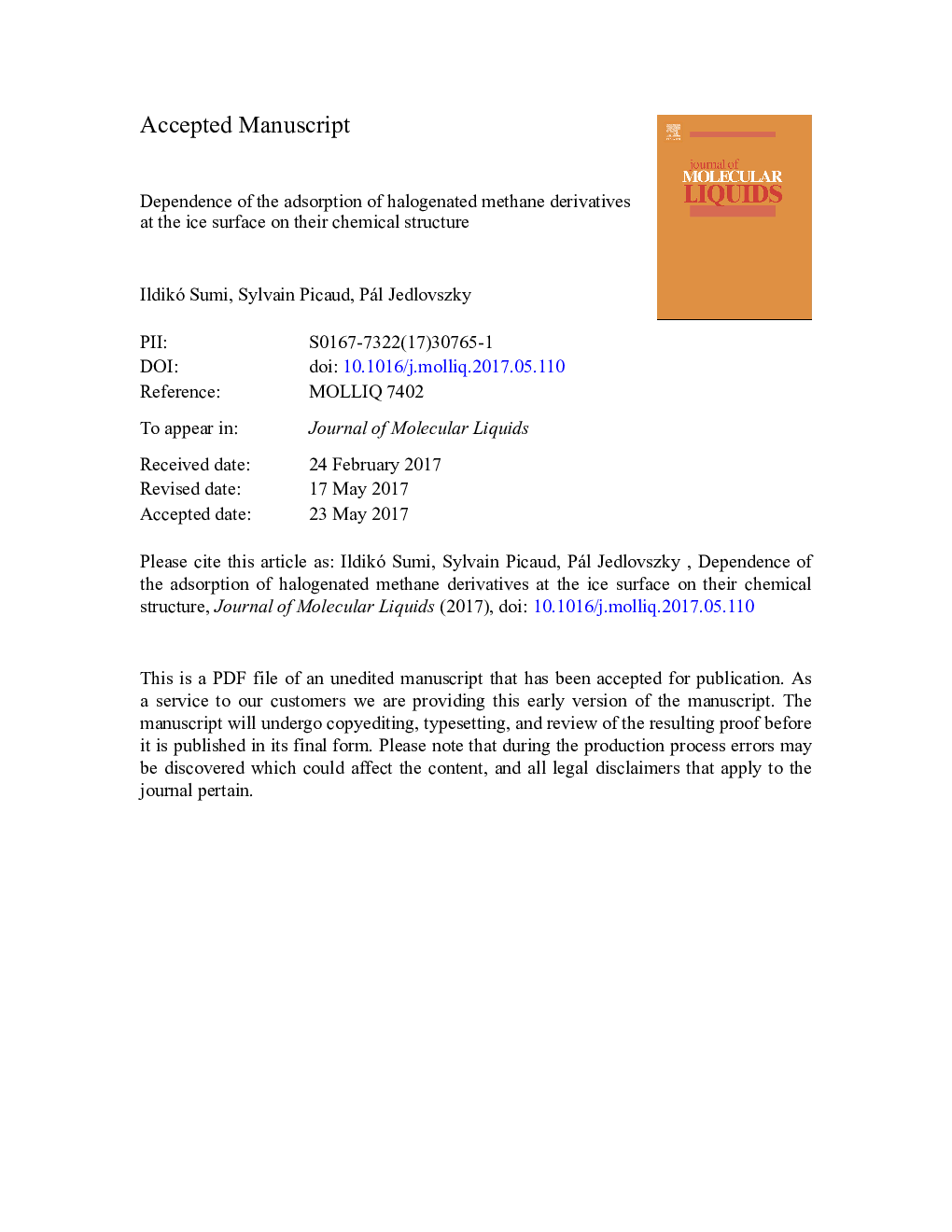| Article ID | Journal | Published Year | Pages | File Type |
|---|---|---|---|---|
| 7843935 | Journal of Molecular Liquids | 2017 | 46 Pages |
Abstract
The adsorption of all the fluorinated and chlorinated methane derivatives as well as methane itself at the surface of Ih ice is studied at the tropospheric temperature of 200Â K by grand canonical Monte Carlo simulations. The general behaviour of the obtained isotherms is in good accordance with existing experimental data, giving us confidence in the models used. The shape of the adsorption isotherms is discussed in terms of the interplay of adhesive and cohesive interactions. It is found that in cases when the former of the two interactions is clearly the stronger one, multilayer adsorption occurs; when the latter interaction is the dominant one, no considerable adsorption is observed, while in cases when the two interactions are of roughly the same strength, the formation of a saturated monolayer occurs. The isotherms exhibit the Langmuir shape, at least up to the pressures where multilayer adsorption starts to occur, given that the cohesion acting between the adsorbate molecules is only moderately strong. Too strong cohesion, on the other hand, leads to the deviation of the isotherm from the Langmuir shape. While the strength of cohesion depends on the properties of the adsorbate molecules, that of adhesion is determined by hydrogen bond formation between the adsorbed molecules and surface waters. Our results show that while CH3F and CH3Cl form several weak, CH donated hydrogen bonds with the surface molecules of the ice phase, the adsorbates containing more than one halogen atom form only one, though strong, OH donated hydrogen bond with them.
Related Topics
Physical Sciences and Engineering
Chemistry
Physical and Theoretical Chemistry
Authors
Ildikó Sumi, Sylvain Picaud, Pál Jedlovszky,
